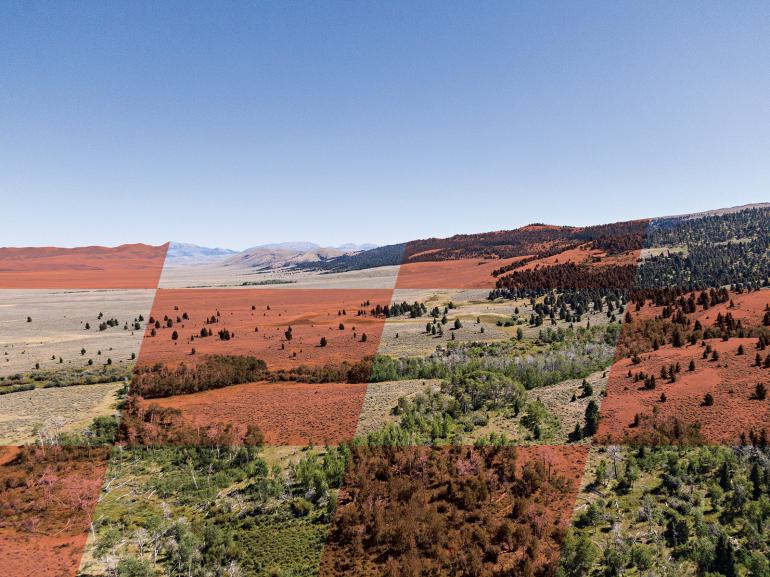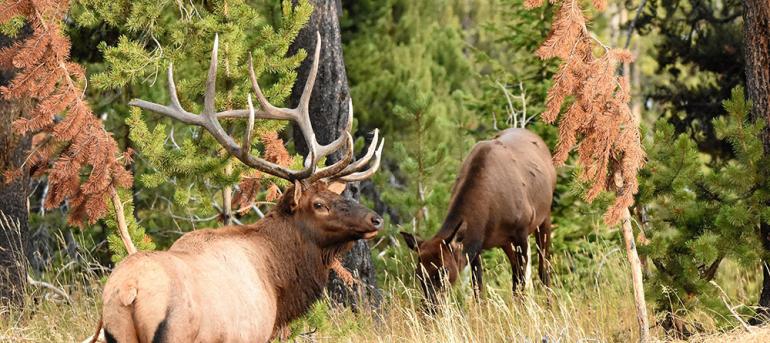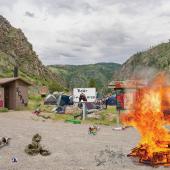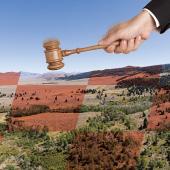Backed into a Corner
Navigating checkerboard land ownership.
Neither state nor federal law mentions the public-land controversy of corner-crossing. Yet the issue is frequenting courtrooms in western states at a growing rate. But governments haven’t offered any guidance toward solving the problem they created in the late 1800s, when they divvied out the West’s vast lands in alternating square chunks. In Montana, the current solutions in play either lack long-term certainty or fall short of benefiting the recreationists who are accessing these pieces of land—resident hunters.
The federal government didn’t even know exactly how much public land was inaccessible to the general public until recently, when a Montana-based GPS-mapping company and a national conservation nonprofit sought to unearth the numbers.
A report from OnX and the Theodore Roosevelt Conservation Partnership discovered that 15.8 million acres of public land over 11 western states are locked from public access. The report exposed that 871,000 acres of public land in Montana are inaccessible to the public.
“At OnX,” the report says, “We believe that publicly-accessible land plays a critical role in equalizing everyone’s access to outdoor recreation, but we also recognize private property rights.”
Cases where checkerboarded parcels make public land inaccessible to the public account for 8.3 million acres—that’s nearly four times the size of Yellowstone National Park. The report found that the crosshairs of public and private land occur 27,120 times across the West.
When it comes to property swaps, acre-for-acre isn’t the only factor for many landowners sitting on a corner-locked piece of land with a trophy bull herd, especially if that landowner runs an outfitting business.
Some private landowners claim that accessing public land at checkerboard intersections with private land is trespassing. But this claim currently has no legal grounds, as no court has upheld that “stepping over a property corner from public land to public land constitutes trespassing.”
Any state legislation that bans corner crossing would bar access to the public-land owners, even though, with modern GPS technology, crossing doesn’t require ever stepping foot on private land. But the United Property Owners of Montana (UPOM) continues to claim that access to thousands of public-land acres belongs to the abutting private landowners alone.
UPOM’s viewpoint is that private landowners own the airspace above their property’s corners. Thus, crossing one corner involves crossing all four corners’ airspace, which according to UPOM, constitutes trespassing. Many of UPOM’s active members are ranchers who offer guided hunting trips on their land and the neighboring public land.
A Supreme Court case (United States v. Causby) ruled that “the landowner owns at least as much of the space above the ground as they can occupy or use in connection with the land.” This case involved chickens and military planes, wherein the former were granted airspace rights over the latter. But the Unlawful Inclosures Act of 1885 makes it illegal for anyone to block free passage into and through public lands.
Confused, yet?
Documented hunting violations and physical trespassing have created problems at some of these checkerboarded corners. And there are tools—mostly short-term fixes—for state governments to improve public access to public lands. Two long-term solutions are currently in play to unlock Montana’s land: land-management agencies swapping or buying lands, and corner easements. But these aren’t always mutually beneficial.
When it comes to land swaps, hunting districts are involved. Acre-for-acre isn’t the only factor for many landowners sitting on a corner-locked piece of land with a trophy bull herd, especially if that landowner runs an outfitting business. A study on Montana’s outfitting industry by the University of Montana found that outfitted hunting trips in the state generated $55.3 million in 2017. A guided elk hunt in Montana today averages around $6,000, and that doesn’t include the $1,500 fee many outfitters charge for harvesting a trophy bull.
Montana is among the most persistent states in finding clarity on this controversy, but all legislative efforts have failed. A Montana Senate bill that would have legalized corner-crossing failed to pass in the House of Representatives in 2013. And in 2017, a bill out of the House of Representatives that aimed to criminalize corner-crossing died on the state’s senate floor.
Montana is also experimenting with short-term solutions, like its Block Management Program, which unlocked over 600,000 acres of public land for the 2020 hunting season. But many of the most contentious corner-crossing access points remain unresolved and heavily disputed. One thing’s for certain, though: if we don’t keep fighting for our public land, we could lose these parcels for good.















